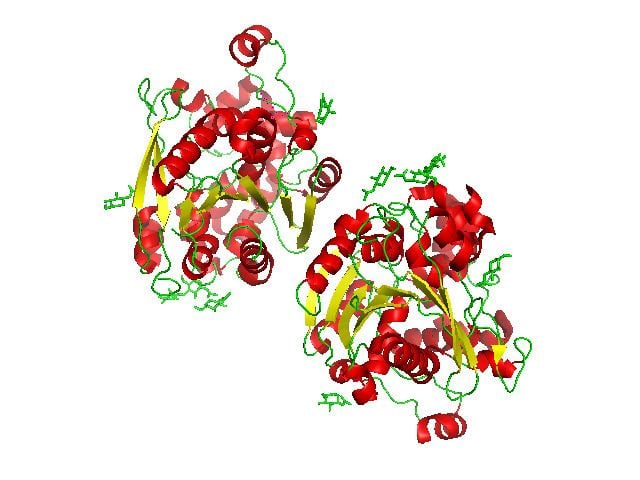Symbol LIPF HUGO 6622 RefSeq NM_004190 | Entrez 8513 OMIM 601980 UniProt P07098 | |
 | ||
Gastric lipase, also known as LIPF, is an enzymatic protein that, in humans, is encoded by the LIPF gene.
Contents
Function
Gastric lipase is an acidic lipase secreted by the gastric chief cells in the fundic mucosa in the stomach. It has a pH optimum of 3–6. Gastric lipase, together with lingual lipase, comprise the two acidic lipases. These lipases, unlike alkaline lipases (such as pancreatic lipase), do not require bile acid or colipase for optimal enzymatic activity. Acidic lipases make up 30% of lipid hydrolysis occurring during digestion in the human adult, with gastric lipase contributing the most of the two acidic lipases. In neonates, acidic lipases are much more important, providing up to 50% of total lipolytic activity.
Clinical significance
Gastric lipase can partially compensate for the decrease in production of pancreatic lipase associated with pancreatic dysfunction, giving some means for the body to digest lipids. A limitation of acidic lipases is that they remove only one fatty acid from each triacylglycerol. The free fatty acid can readily cross the epithelial membrane lining the gastrointestinal tract, but the diacylglycerol cannot be transported across. This leaves the acidic lipases less efficient than alkaline lipases.
Structure
Gastric lipase is a polypeptide of 371 residues in length. The structure of gastric lipase was determined using X-ray diffraction with a resolution of 3.00 Å, and is composed of 41% helices and 14% beta sheets. Gastric lipase belongs to the α/β-hydrolase-fold family. It possesses a classical catalytic triad (Ser-153, His-353, Asp-324) and an oxyanion hole (backbone NH groups of Gln-154 and Leu-67) analogous to serine proteases.
